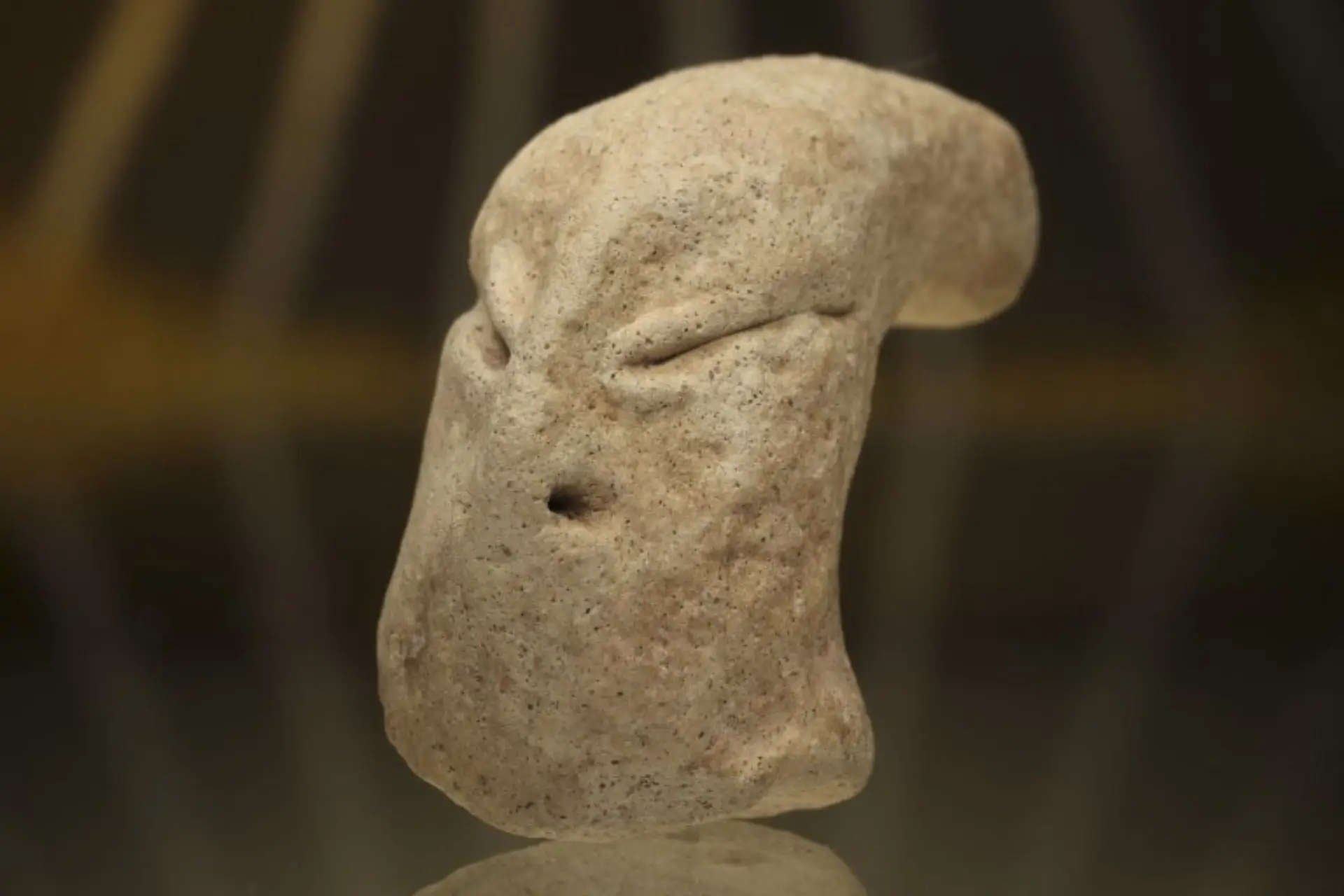A mysterious 7,000-year-old figurine with “alien-like” features has been unearthed in Kuwait, surprising archaeologists and raising questions about ancient art and symbolism in early civilizations. This discovery sheds light on prehistoric societies in the Arabian Gulf region.
Key Points at a Glance:
- A 7,000-year-old human-like figurine was discovered at an archaeological site in Kuwait.
- The figurine’s distinct “alien-like” appearance puzzled experts, featuring a narrow head, exaggerated eyes, and a slim body.
- The artifact dates back to the Ubaid period, predating Sumerian civilization.
- Researchers believe the figurine could represent cultural or spiritual symbolism from the time.
- The discovery highlights early artistic expression and raises new questions about ancient Gulf societies.
The figurine was unearthed at the site of Bahra 1, a Neolithic settlement in northern Kuwait. Bahra 1, already recognized as a key location for understanding prehistoric cultures, surprised experts when the unique artifact emerged. Estimated to be 7,000 years old, the small human-like figurine is unlike typical depictions from the region, suggesting artistic experimentation or deeper symbolic meanings.
What makes the discovery exceptional is its exaggerated features: narrow, elongated heads, slanted eyes, and a slender, abstract body. These characteristics differ sharply from other Ubaid period artifacts and challenge previous assumptions about prehistoric art in the Arabian Peninsula.
The figurine originates from the Ubaid period (circa 5500–4000 BCE), a crucial era preceding the emergence of the Sumerian civilization in Mesopotamia. This period was characterized by advancements in agriculture, settlements, and art. The Ubaid people were known for their pottery and simple figurines, often depicting humans or deities.
However, the newly discovered artifact departs from the typical style associated with Ubaid culture. Its abstract, alien-like form raises speculation: Was it a representation of spiritual figures, ancestors, or purely an artistic expression? The figurine’s unique design also hints at cross-cultural influences or local variations within the Gulf region.
Art and figurines in prehistoric societies often carried symbolic or ritualistic importance. The Kuwaiti figurine’s design might signify a cultural icon, spiritual figure, or an abstract interpretation of human features. Its discovery provides a rare glimpse into the artistic practices of Neolithic Gulf communities.
Experts suggest that the exaggerated eyes and slender form could symbolize heightened spiritual awareness or otherworldly beings—a recurring theme in early cultures worldwide. Whether the artifact represents symbolism, daily life, or spiritual beliefs, it challenges conventional views of artistic expression in the Ubaid period.
The discovery at Bahra 1 is a testament to the complexity and creativity of early Gulf settlements. It underscores the region’s role as a hub of cultural development, predating the Sumerians and showing signs of advanced artistic and symbolic thinking.
Archaeologists believe further excavation at Bahra 1 may uncover additional artifacts, revealing more about the society that created the figurine. This discovery opens new avenues for research into trade, cultural exchanges, and artistic evolution in the prehistoric Arabian Peninsula.
The 7,000-year-old alien-like figurine stands as a reminder of humanity’s enduring fascination with art and symbolism. Its unique form offers a window into the lives and beliefs of ancient Gulf communities while raising questions that archaeologists have yet to answer.
What other mysteries lie beneath the sands of the Arabian Peninsula?
